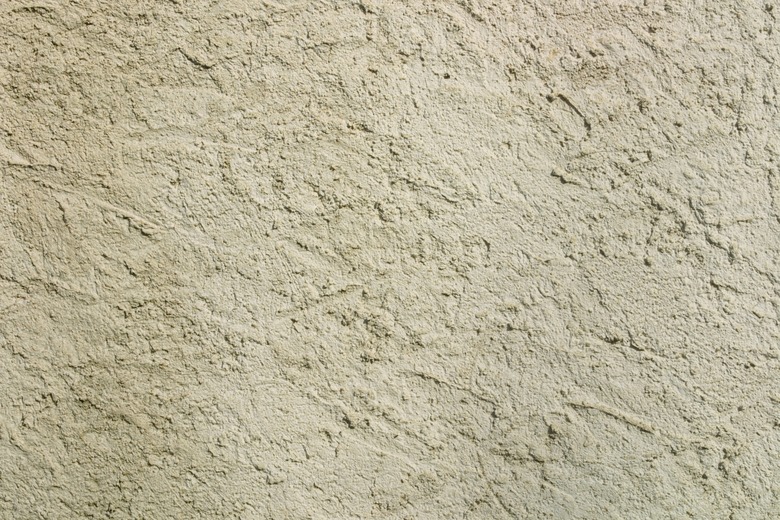How To Install Stucco Over A Wood Frame House
Step 1
Prepare a wood-sheathed wall for stucco by installing a moisture membrane, fastened to the wood sheathing with a construction stapler. Put metal flashing around any windows or doors; nail it to the sheathing with galvanized nails and a hammer. Cover the wall with metal lath, nailed at stud locations with galvanized nails. Place "weep screed," a metal strip with holes in it, under the lath at the bottom of the wall to catch any moisture that gets behind the lath and allow it to drain away.
Step 2
Mix prepared stucco for a "scratch coat" — follow directions on the package for this. Spread the stucco over the lath three-eighths to half-inch thick with a rectangular mason's trowel. Scratch it horizontally after it begins to set with the notched edge of the trowel, a stiff bristle broom or a leaf rake, to form depressions to hold a second coat of stucco. Let this coat dry 48 to 72 hours, misting it occasionally with a garden hose to keep it moist.
Step 3
- Prepare a wood-sheathed wall for stucco by installing a moisture membrane, fastened to the wood sheathing with a construction stapler.
- Place "weep screed," a metal strip with holes in it, under the lath at the bottom of the wall to catch any moisture that gets behind the lath and allow it to drain away.
Step 4
Dampen the scratch coat with a misting nozzle on a garden hose, mix more stucco with slightly more sand in it and spread a "brown" coat over the scratch coat. Spread this layer with a trowel one-fourth to three-eighths-inch thick. "Screed" or smooth it with a long straight board dragged across the surface to smooth and even it. Clean the excess stucco off any horizontal surfaces where it fell. Let this coat dry, also misting it periodically.
Step 5
Spread a final coat of stucco one-sixteenth to one-eighth-inch thick with a pointed mason's trowel. Dampen the brown coat slightly first. Finish this coat with any desired texture. Make it almost perfectly smooth, roughen it with trowel strokes or give it a "popcorn" effect. Make popcorn by putting the flat side of a rectangular trowel on an area and lifting stucco up, then smoothing the peaks of that lifting. Let this coat dry, hydrating it like the first two coats.
Step 6
- Dampen the scratch coat with a misting nozzle on a garden hose, mix more stucco with slightly more sand in it and spread a "brown" coat over the scratch coat.
- Make popcorn by putting the flat side of a rectangular trowel on an area and lifting stucco up, then smoothing the peaks of that lifting.
